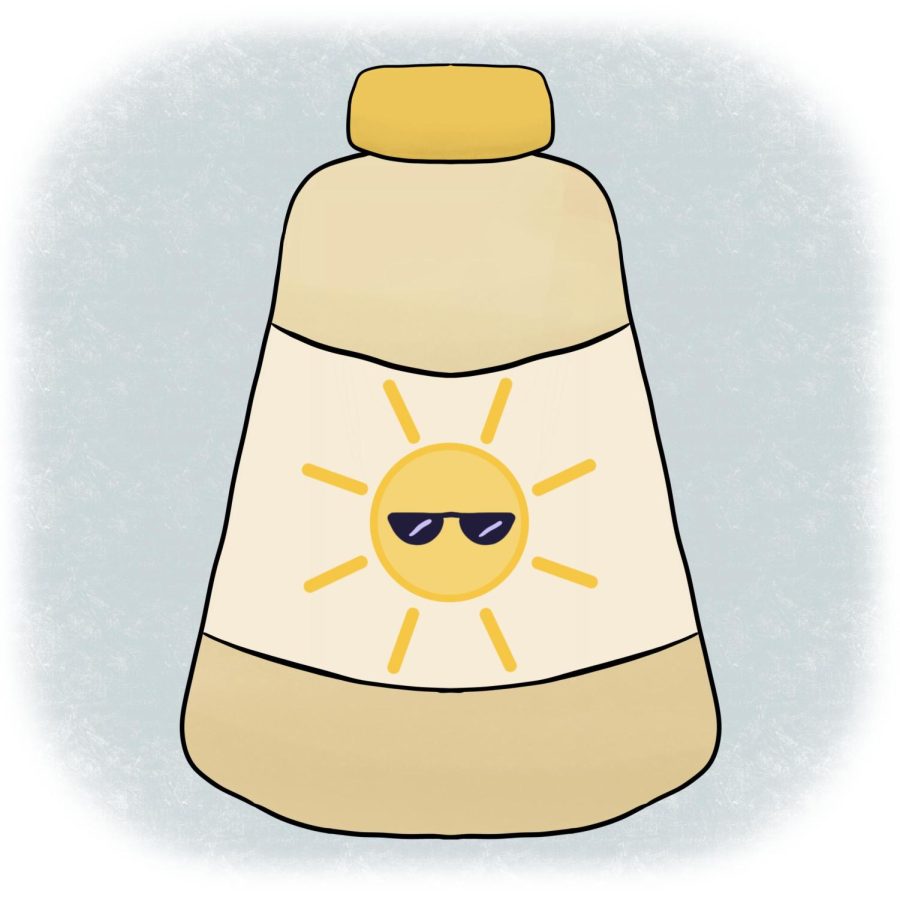Opinion | PSA — Wear your sunscreen, even in winter
January 10, 2023
Did you know that even when the sky is cloudy, 80% of the sun’s UV rays reach Earth? Even though we have entered the winter months, that doesn’t mean you should neglect wearing sun protection.
Many of us may think that since it’s not summer and the sun’s rays aren’t beating down on us for hours a day, we can get away with not using sun protection in these colder months. However, this is a misconception. The sun’s UV rays always shine through, even if invisible to the human eye.
People not interested or invested in skincare may fail to see the importance of sun protection, but it is essential to the health of our skin. Increasing your use of sun protection can greatly reduce your chances of premature wrinkles and getting skin cancer. Whether we approach this issue from an aesthetics or health perspective, sunscreen is greatly beneficial and should be worn every day, year-round.
The sun emits three types of UV rays — UVA, UVB and UVC. All three types have the potential to damage your skin. UVA penetrates the top to middle layers of the skin. UVB — which is a shorter wavelength — only penetrates the top layers of the skin but some of the rays can be blocked out by the ozone layer. UVC rays are completely stopped by the ozone layer, but we can still get exposed to them from artificial light, such as lasers and torches. Although UVA and UVB rays pose the greatest threat to sun damage, UVC is the most dangerous type of radiation.
Although UVB rays are the strongest ray and the main cause of sunburn, they still do some heavy damage in the winter. UVB rays can burn or damage your skin year-round, especially when the rays bounce off of reflective surfaces, such as snow or ice.
So, how do we prevent harmful UV damage to our skin? One solution is picking out a high-quality sunscreen with high sun protection. When choosing the right sunscreen for you, there are a few things to pay attention to — Sun Protection Factor, protection level and whether it’s a chemical or mineral sunscreen.
The first thing you must take into consideration is SPF. The SPF number on a sunscreen tells you how long it takes the sun’s UV radiation to actually burn your skin when exposed to full sunlight. You ideally want to wear a sunscreen between SPF 30 and SPF 50, which blocks around 97% of UVB rays.
One downside with sunscreen is that the protection power is not infinite. SPF protection only lasts for about two hours, which is why reapplication is also super important. The active ingredients in sunscreen break down when exposed to direct sunlight. So, we must reapply our sunscreens in order for SPF protection to be fully effective throughout the day.
On certain sunscreens, there is also a “PA+++” label which indicates the level of protection against UVA rays. The scale goes from one plus signs to four. Four signifies that the sunscreen has the maximum amount of UVA protection. This label is prevalent among East Asian — especially Korean — sunscreens. One Korean sunscreen that has gone viral the past year on TikTok is the Beauty of Joseon Relief Sun.
Korean skincare products have been going viral due to their innovative ingredients which are not as seen in the American market. They heavily emphasize the importance of sun protection, and the “glass skin” trend reflects that.
Anyone can use sunscreen — whether you’re fairer or darker in complexion. It will protect anyone who uses it with adequate sun protection. People with darker skin naturally produce more melanin, which is what gives skin its color and is what absorbs the sun’s UV rays, providing people with darker complexions a natural SPF of up to 13. Despite this natural SPF, if they stay in the sun for long enough, they can still get sunburnt even if it isn’t as visibly noticeable. Although darker skin naturally offers more sun protection, no one is fully immune to sun damage.
Another factor to consider is whether you’d want a chemical or mineral sunscreen, which mostly depends on your skin type. Although they both serve the same purpose, mineral and chemical sunscreens function a little differently from each other. Mineral sunscreens include ingredients such as titanium dioxide or zinc oxide that form a physical barrier against UV radiation so it can filter out the sun’s damaging rays. Chemical sunscreens are formulated to create chemical filters to protect the skin from sun damage. Some of these ingredients include oxybenzone, avobenzone, octinoxate and octisalate, which act as an absorbent for UVA and UVB rays before they reach the skin.
You must also factor in what may or may not work for your skin type. For example, if you have very oily skin, you may not want a sunscreen that is thicker in texture and makes your face look shinier. And if your skin is drier, you may want to opt for a sunscreen that has a shinier finish and is more moisturizing. What works for one person may not work for someone else, so find out what sunscreen works for you.
At the end of the day, all of these factors and considerations are merely suggestions. The most important thing is finding a sunscreen that works for your skin and whatever concerns you may have. Find one that you like using so you get into the habit of doing so every day. In the long run, it is easier to prevent wrinkles and skin cancer than to treat them.
Kelly Xiong writes primarily about personal health and wellness. Write to her at jux13@pitt.edu.



